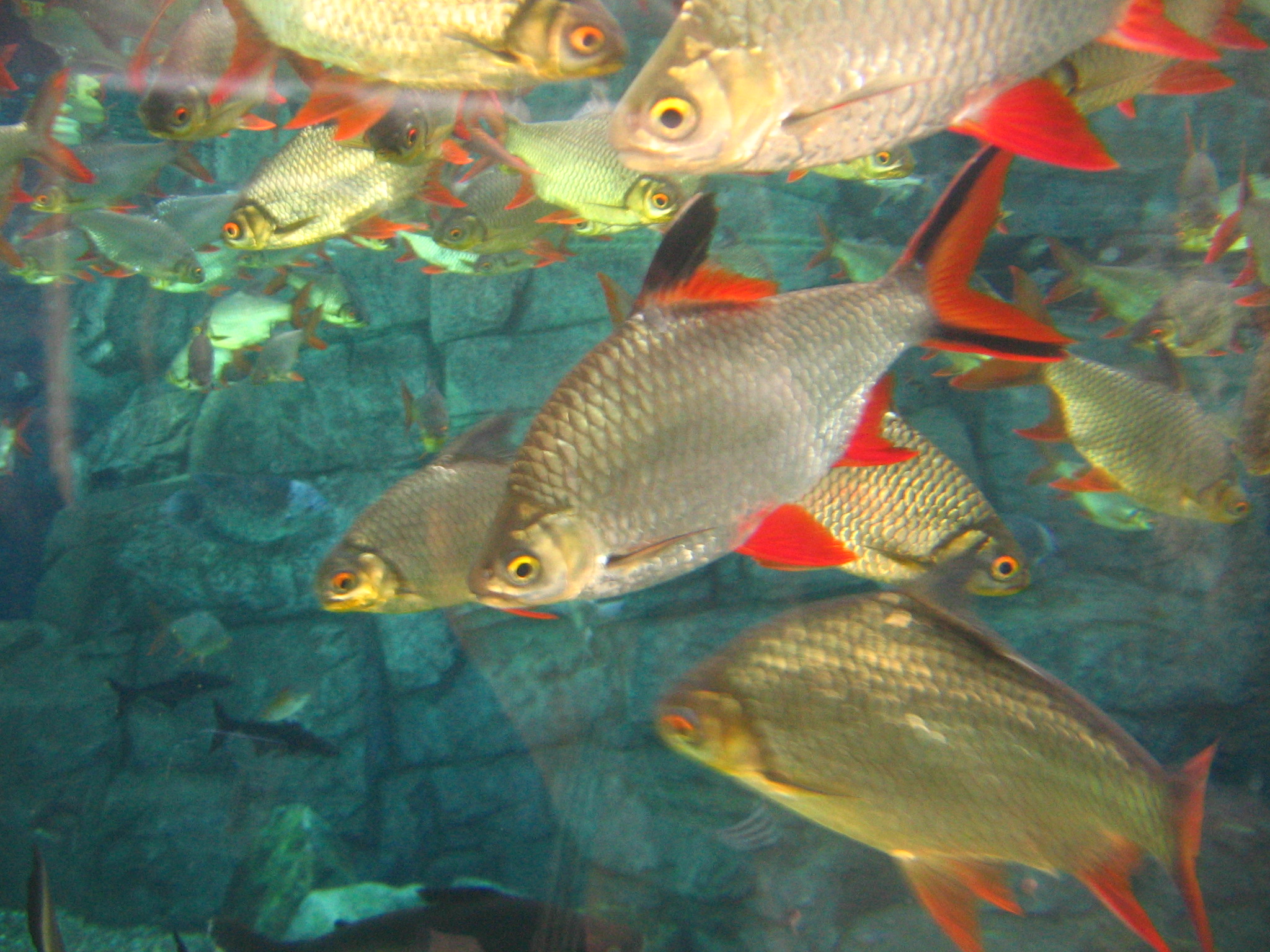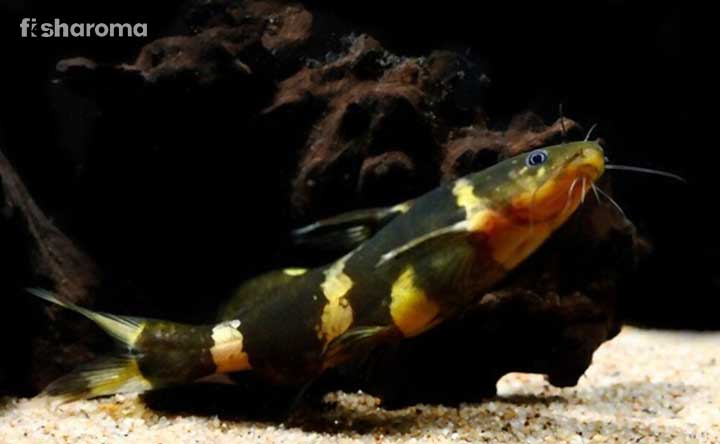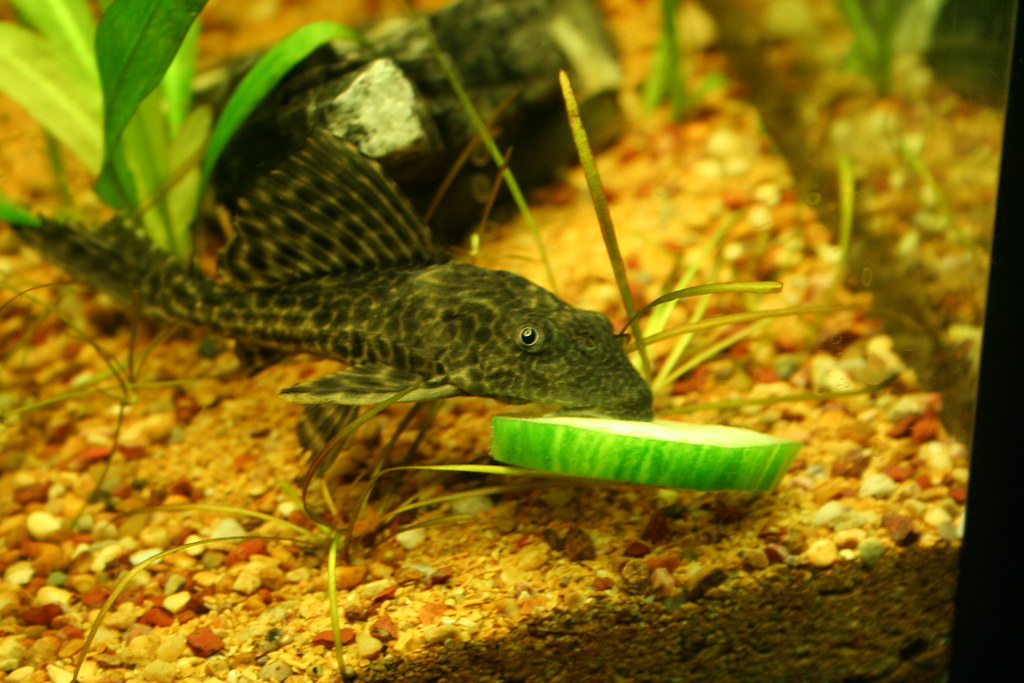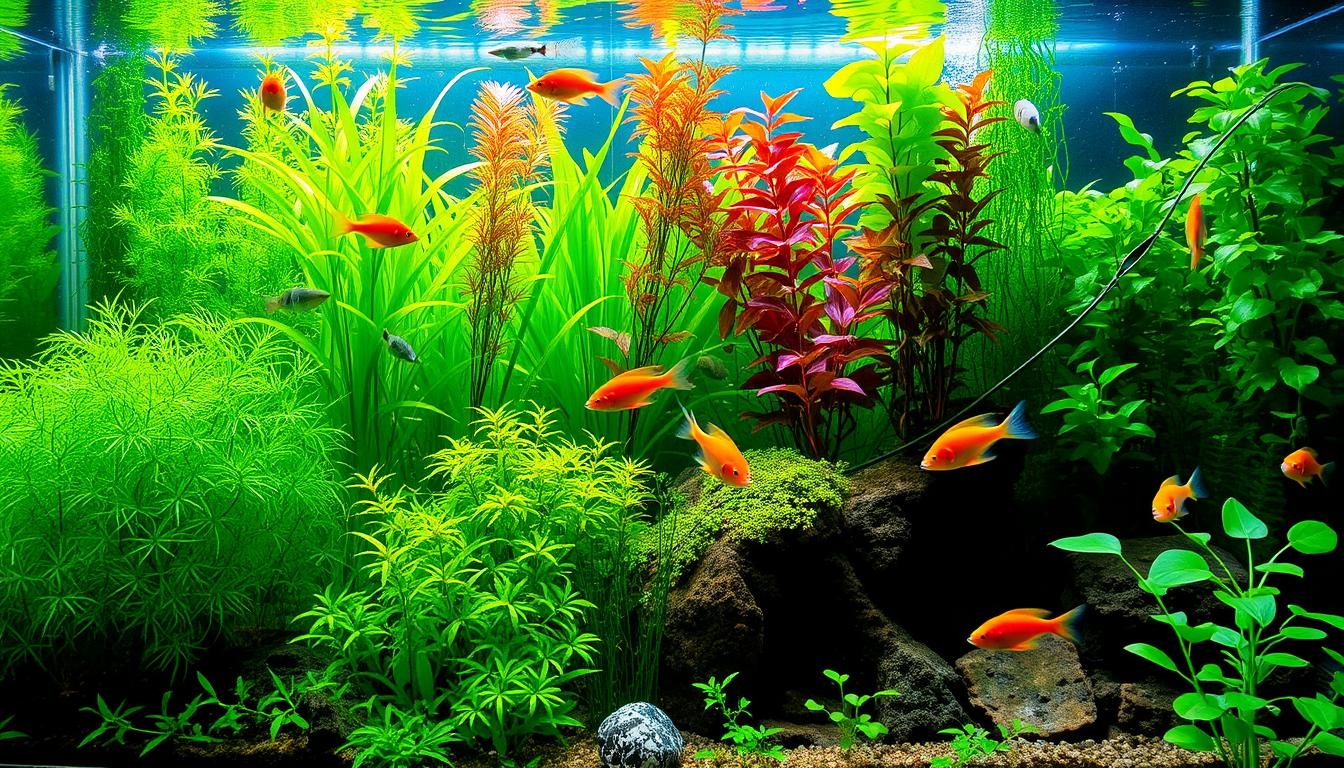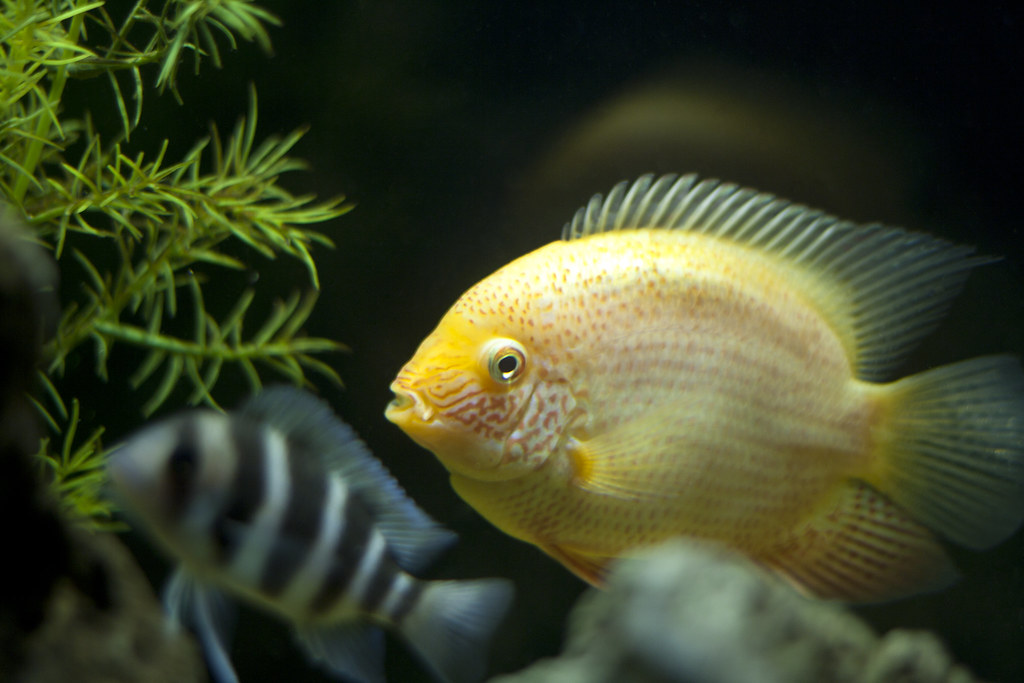Did you know tinfoil barbs can grow up to 35 cm long? These fish, known as Barbonymus schwanenfeldii, were first described in 1853. They have become favorites among aquarium lovers for their shiny scales and lively nature. In this guide, we’ll explore the world of tinfoil barb fish. We’ll talk about their care, tank mates, and breeding.
If you’re new to fish or already love these fish, this guide is for you. We’ll share tips on creating the best home for your tinfoil barbs. You’ll learn about their water needs, the best friends for them in the tank, and how to breed them. Join us as we explore the world of tinfoil barbs together!
Table of Contents
Key Takeaways
- Tinfoil barbs are stunning freshwater fish that can grow up to 35 cm in length
- Learn about tinfoil barb care requirements, including ideal water parameters and tank setup
- Discover compatible tinfoil barb tankmates and species to avoid
- Gain insights into tinfoil barb breeding challenges and techniques
- Create a thriving aquatic environment for your tinfoil barbs with expert tips and guidance
Tinfoil Barb Fish Overview
The tinfoil barb fish, known as Barbonymus schwanenfeldii, comes from Southeast Asia. Countries like Indonesia and Myanmar are home to these fish. They are also known as Goldfoil Barbs, River Barbs, or Schwanefeld’s Barbs. These fish are peaceful and do well in groups of five or more, showing their natural behavior.
Tinfoil barbs can grow up to 14 inches (35 cm) long. This makes them a big addition to any aquarium. They can live for 8 to 10 years with the right care and environment.
Tinfoil barbs eat a variety of foods because they are omnivores. They eat almost anything given to them. In the wild, they live in temperatures between 20.4°C to 33.7°C, showing they can adapt to different water conditions.
These fish lay many eggs, which the male fertilizes. A single female can lay thousands of eggs. This makes them popular in aquariums and commercial fish farming.
| Scientific Name | Barbonymus schwanenfeldii |
|---|---|
| Common Names | Goldfoil Barb, River Barb, Schwanefeld’s Barb |
| Native Range | Southeast Asia (Indonesia, Myanmar, etc.) |
| Adult Size | Up to 14 inches (35 cm) |
| Lifespan | 8 to 10 years |
| Temperament | Peaceful, schooling fish |
| Diet | Omnivorous |
| Reproduction | Egg-scatterer |
Tinfoil barbs are popular in aquariums and commercial fish farming. They prefer to be with their own kind. Keeping them in groups helps them stay happy and stress-free.
When keeping tinfoil barbs in an aquarium, think about their size. They need enough space to move and explore. They like strong water currents and should be with tankmates of similar size or bigger to avoid conflicts.
Tinfoil Barb Appearance and Characteristics
Tinfoil Barbs are known for their unique look and size. They have a distinct appearance that makes them stand out in aquariums. Let’s explore their appearance and characteristics.
Maximum Size and Lifespan
Tinfoil Barbs can grow quite large, up to 14-16 inches in the wild. In captivity, they usually reach about 35 cm. They can live for 10 to 15 years with proper care, but only 5 to 10 years in the wild.
Physical Features and Coloration
Tinfoil Barbs are famous for their beautiful colors and unique features. They have a golden-silver body with a bright red dorsal fin and a black spot at the tip. Their fins, including the pelvic, anal, and pectoral, are red with white and black stripes.
They also have eight scale rows between their dorsal fin and lateral line. This pattern is a key way to tell them apart from similar fish.
Sexual Dimorphism
It’s hard to tell male and female Tinfoil Barbs apart because they don’t look very different. Females are usually a bit bigger and fuller. Males might have longer fins during breeding season, but this isn’t always easy to see.
Despite being hard to tell apart, Tinfoil Barbs breed in groups in shallow, slow waters with plants. They prefer these conditions during the rainy season.
In summary, Tinfoil Barbs are a stunning fish with their golden bodies, red fins, and black spots. Their size and unique look make them a great choice for aquariums. They are truly unique and captivating fish.
Natural Habitat of Tinfoil Barbs
Tinfoil barbs are known for their amazing ability to adapt and survive. They come from the diverse waters of Southeast Asia. These fish live in a variety of habitats, showing how well they can adjust to different environments.
Geographic Range and Distribution
Tinfoil barbs live in many countries in Southeast Asia. These include Thailand, Cambodia, Laos, Vietnam, Malaysia, and Indonesia. They are found in the Mekong and Chao Phraya river basins, the Malay Peninsula, and on islands like Borneo and Sumatra.
This wide spread shows how well these fish can live in different waters. They are successful in many freshwater places in their home range.
Preferred Aquatic Environments
Tinfoil barbs can live in many types of water. They like:
- Rivers and streams with moderate to strong currents
- Floodplains and seasonally flooded areas
- Canals and irrigation channels
- Ditches and smaller tributaries
The places where tinfoil barbs live have different water conditions. Here are some details:
| Parameter | Range |
|---|---|
| Temperature | 22–25 °C (72–77 °F) |
| pH | 6.5–7.0 |
| Water Hardness | Up to 10 dGH |
Tinfoil barbs can live in a variety of conditions. This shows how tough and adaptable they are. Knowing about their natural habitat helps aquarists take good care of them in tanks.
Caring for Tinfoil Barb Fish in Aquariums
Setting up a home for your tinfoil barbs is key. They love to swim and be around others. So, picking the right tank size is crucial. Also, keeping the water perfect for them is a must for their health.
Tank Size and Setup Requirements
Tinfoil barbs can grow up to 12 inches long. So, they need a big tank. A 90-gallon tank is the minimum size for adults. If you keep a school of 6 or more, you’ll need an even bigger tank.
They don’t need special decorations, but they love to swim. Use big power filters or canister filters to keep the water clean. These fish can make a lot of waste because they eat a lot.
Water Parameters and Maintenance
Keeping the water perfect is key for your tinfoil barbs. They do best in these conditions:
| Parameter | Recommended Range |
|---|---|
| Temperature | 74-78°F (23-26°C) |
| pH | 6.0-7.5 |
| Water Hardness | 5-15 dGH |
| Nitrates |
For the best water, change it weekly and use good filters. Change 25-30% of the water each week to keep it clean. Use a test kit to check the water quality often.
Give your tinfoil barbs a big tank, the right water, and good care. This way, they’ll be happy and show off their beauty.
Tinfoil Barb Diet and Feeding
Tinfoil Barbs eat both plants and animals, making their diet easy to manage. In the wild, they enjoy aquatic plants, algae, and small animals like insect larvae and fish fry. This varied diet helps them live well in different water environments.
For aquariums, it’s key to feed Tinfoil Barbs a diet that matches their wild diet. A good diet includes pellets or flakes as the main food. Add algae wafers, blanched veggies, and frozen foods like bloodworms and brine shrimp too. This mix ensures they get all the nutrients for health and color.
| Food Type | Frequency | Amount |
|---|---|---|
| Pellets or Flakes | 2-3 times daily | Amount consumed within 2-3 minutes |
| Algae Wafers | 2-3 times per week | 1 wafer per 5 fish |
| Blanched Vegetables | 2-3 times per week | Small pieces, removed after a few hours |
| Frozen or Freeze-Dried Foods | 2-3 times per week | Small pinch, dispersed evenly |
Tinfoil Barbs love to eat and might go for live plants or small fish if they can. Make sure plants are big and tankmates are the right size. Don’t feed them too much to avoid water quality problems and health issues.
Feed your Tinfoil Barbs small amounts 2-3 times a day. This is like how they eat in the wild and keeps their digestion healthy. Watch how much they eat and adjust the food to keep the water clean.
Tankmates and Compatibility
Tinfoil barbs are peaceful fish that can live with many other fish. When picking tankmates, think about their size, behavior, and what they like in their environment. This helps create a balanced and happy fish community.
Suitable Tankmates for Tinfoil Barbs
Choose fish that are about the same size and peaceful, like tinfoil barbs. Good tankmates include:
- Bala sharks
- Angelfish
- Silver dollars
- Larger tetras (e.g., Congo tetras, Black skirt tetras)
- Plecos
- Arowanas
- Gouramis
- Large cichlids (e.g., Oscar cichlids)
- Fire eels
- Clown loaches
Tinfoil barbs like to be in groups of five or more. Make sure the fish you pick can live well with tinfoil barbs and have enough room to swim together.
Species to Avoid
Some fish don’t get along with tinfoil barbs:
- Small fish might become prey for tinfoil barbs.
- Aggressive fish could bother or hurt tinfoil barbs.
- Slow-moving or long-finned fish might get stressed or harmed by tinfoil barbs.
Also, tinfoil barbs don’t do well in tanks with lots of plants. They might eat or uproot them. If you want plants, choose hardy ones or use fake plants instead.
| Tank Size | Minimum for Tinfoil Barbs | Ideal for a School |
|---|---|---|
| 75 gallons | Absolute minimum | Insufficient |
| 125-200 gallons | Suitable | Recommended |
| 225+ gallons | Ideal | Optimal |
Think about your aquarium’s size and how many fish you want before picking tankmates for tinfoil barbs. With enough space and the right fish friends, you can make a beautiful and peaceful tank.
Breeding Tinfoil Barbs
Breeding tinfoil barbs at home is tough because they are big and need special care. These fish lay eggs on the tank floor and don’t take care of their babies. They might even eat their own eggs and young. To breed them and help their babies survive, you need to meet certain conditions.
Breeding Challenges in Home Aquariums
One big problem with breeding tinfoil barbs at home is their size. They can grow over 40 centimeters long. They need big tanks to live well. Breeding them works better in outdoor setups or large aquariums that give them enough room to spawn.
Breeding Setup and Conditions
To help tinfoil barbs breed successfully, use a special tank or a big aquarium with lots of plants. Java moss is great for hiding spots for the young fish and looks like their natural home. The water should be soft to moderately hard, with a pH of 6.5 to 7.0 and a temperature of 22° to 25°C.
Broodstock tanks should be really big to hold lots of fish. Two-year-old tinfoil barbs work best for breeding. While preparing for spawning, don’t feed the fish. Give them a diet rich in protein before and during the breeding process.
Raising Tinfoil Barb Fry
Female tinfoil barbs can lay over 5,000 eggs at a time. The tank for the larvae needs to be big enough for all these fish. Tinfoil barbs grow up in Hawaii from May to July, with females getting ready to lay eggs in March or April.
For tinfoil barb fry to survive, they need a good home and care. Make sure there are places for them to hide, like Java moss. Keep the tank clean and change the water often to help the fry grow strong.
Common Health Issues and Treatment
Tinfoil barbs can face various health problems, just like any aquarium fish. Keeping the water clean, isolating new fish, and feeding them right can prevent many issues. But, even with great care, tinfoil barbs can get sick. It’s key to spot and treat these diseases quickly.
Some common health issues include:
- Ich (white spot disease)
- Fin rot
- Bacterial infections
- Parasitic infections, such as Camallanus worms
A fish owner noticed their tinfoil barb had white, stringy poop. This could mean parasites were present. Sadly, the fish didn’t make it despite treatment. This shows how vital early detection and action are when dealing with tinfoil barb diseases.
Another aquarist used an “Anti-Ich solution” for ich, a common problem. The treatment made the tank turn blue, showing efforts to fight the condition.
| Disease | Symptoms | Treatment |
|---|---|---|
| Ich | White spots on the skin and fins, lethargy, loss of appetite | Raise water temperature, use ich medication, perform frequent water changes |
| Fin rot | Frayed or discolored fins, lethargy, loss of appetite | Improve water quality, use antibacterial medication, perform frequent water changes |
| Bacterial infections | Skin lesions, cloudy eyes, lethargy, loss of appetite | Use antibacterial medication, improve water quality, perform frequent water changes |
| Parasitic infections | White, stringy poop, weight loss, lethargy, loss of appetite | Use antiparasitic medication, improve water quality, perform frequent water changes |
If you think your tinfoil barbs are sick, get help from a vet or an expert aquarist. They can give the right diagnosis and treatment. By being watchful and acting fast, you can keep your fish healthy and your aquarium thriving.
Conclusion
Tinfoil barbs are truly remarkable fish that can make a stunning addition to any large, well-maintained aquarium. They have shimmering scales and can grow over 40 cm (16 inches) long. They can even live more than 10 years in captivity, captivating both new and experienced fish keepers.
To keep your tinfoil barbs healthy and long-lived, it’s important to know what they need. They need a big tank with soft to moderately hard water. The pH should be between 6.5 and 7.0, and the temperature should be between 22° to 25°C (72° to 78°F). Regular tank cleaning and a balanced diet are also crucial for their well-being.
Breeding tinfoil barbs at home can be tough but possible. With the right setup, water conditions, and patience, you might see thousands of tiny fry. By following this guide, you can give your tinfoil barbs the care they need. This will help them thrive and bring joy to your aquarium for many years.
FAQ
What is the maximum size of tinfoil barbs?
What is the lifespan of tinfoil barbs in captivity?
What are the ideal water parameters for tinfoil barbs?
What do tinfoil barbs eat?
Can tinfoil barbs be kept with other fish species?
Are tinfoil barbs suitable for planted aquariums?
Is it easy to breed tinfoil barbs in home aquariums?
What are some common health issues in tinfoil barbs?
How can I prevent my tinfoil barbs from eating their eggs and fry?
I am a passionate aquarist with over 30 years of hands-on experience in fishkeeping. My journey began at a young age, collecting fish from the wild and learning through experimentation. Specializing in tropical fish, I bring a deep understanding of the hobby to FishKeepingMadeSimple. The site provides honest, detailed reviews of essential products and accessories to help fellow enthusiasts create the best environments for their fish.

